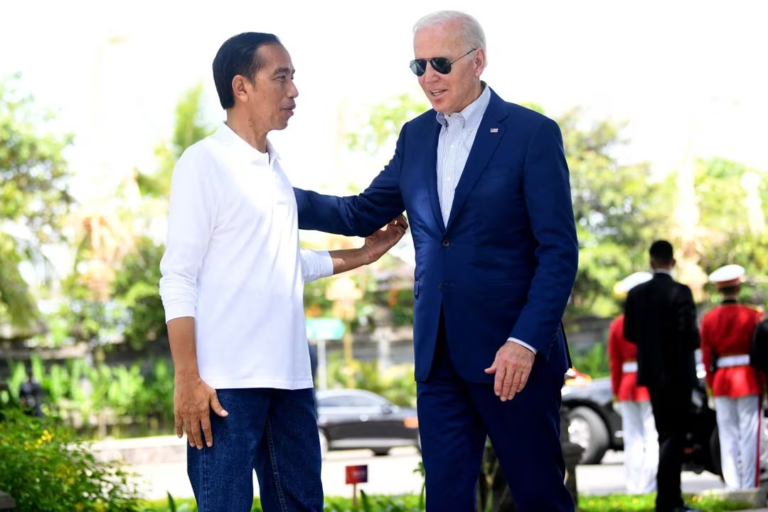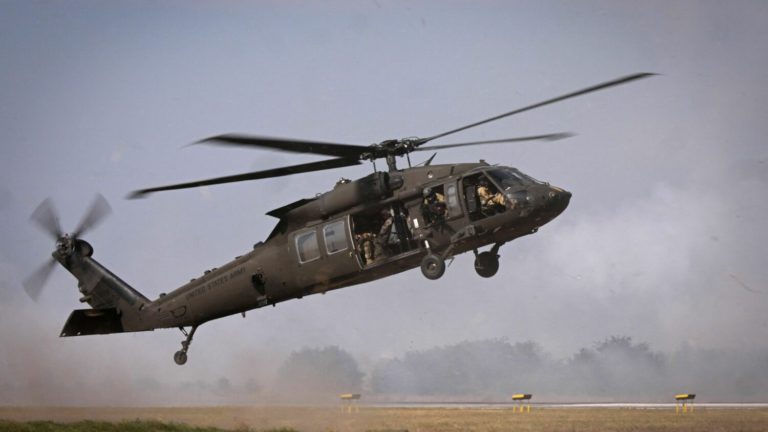Each leading global player tries to spread and acquire adherents for their political ideas, norms, rules, and values to achieve their own political and diplomatic goals and defeat their rival’s ideological agenda. This competition persists in interstate ties and through supranational institutions such as the IMF, World Bank, and UN- and minilateral groups such as the Quad, AUKUS, SCO, BRICS, and others. The techniques used in this are diverse, but the two most important are financial help and military assistance.
The Superpower Rivalry
This contest is now being fought between the United States and China. China attempts to dethrone the United States as an economic, scientific, and military superpower through various domestic and international programmes. In recent years, the United States, seeking to spread its political principles, has taken a strong stance against China in various areas.
US Challenge and China’s Woes
In the Indo-Pacific region, China was facing this pushback from the US through the latter’s freedom of navigation patrols FANOPs in the South China Sea and military flights over the area despite Chinese military opposition and financial and military cooperation with many Pacific Island Nations and ASEAN members such as Philippines, Thailand and Vietnam. Chinese business entities and state-owned enterprises are under economic sanctions by the US due to its human rights abuses of Uyghurs in Xinxiang and China’s support to Russia in the Ukraine conflict. The Chinese economy has been stagnant since the strict lockdown imposed by the government during the COVID-19 pandemic, and there are few encouraging signs that growth will soon resume. Joe Biden made it crystal clear that the United States will use military force to stop China from attacking Taiwan. This year, the Philippines sought clarifications on its seven decades-old mutual defence treaty with the US, which the latter obliged. Following his attendance at the G-20 conference in New Delhi last month, Joe Biden took a plane to Vietnam, where he was welcomed with open arms and made repeated promises to strengthen ties and support Vietnam. However, beneath the veneer of this cooperation lies the geopolitical importance of Vietnam for the US in its contest with China. In its effort to counter China, the US has rallied its partners in groupings such as the Quad and the AUKUS to check China’s expansionist and aggressive tendencies in the Indo-Pacific region and the South China Sea in particular. The US is playing spoilsport in the Chinese ambition of annexing Taiwan by affirming its support through military intervention in case of an armed conflict.
China has emerged as the largest maritime force in the maritime domain and has expanded its territorial reach beyond the globally accepted limits in the South China Sea. In Central Asia and Europe, it has expanded its influence through the Belt and Road Initiative. Similarly, China has also influenced the Middle East and West Asia by establishing strategic relations with Iran- a pariah of the West-led global system and strong business relations with Saudi Arabia and the UAE. Modern China, which emerged due to communist revolutionary ideology, has consistently and actively supported the Palestinian movement since the 1960s. It has trained and armed the various armed militant groups of Palestine. However, since the 1980s, China has started taking a more mercantile view of its foreign relations, growing closer to Israel and establishing full diplomatic relations with the latter in 1992. While maintaining diplomatic relations with Israel, it has continued its dalliance with Palestinian militant groups through its support for the Two States Solution.
The Stratagem
China has not unequivocally condemned the dastardly terrorist attack by Hamas on Israeli civilians on 11 Oct 2023 but has condemned all types of violence- in a very generic and broad brushing statement. It has rather blamed its main geopolitical rival –the US, for being responsible for the state of affairs in the Middle East. Yun Sun, the director of the China Program at the Stimson Centre in Washington, told Reuters that it is unclear who is behind Hamas and maybe China’s partner(s). So, when those behind this act of Hamas are named, China will be morally obligated to take action against them –something that may be against China’s interest. But the truth cannot be hidden for too long. It has emerged that Iranian officials had recently endorsed the Hamas operation’s launch in a meeting with Hamas and Hezbollah’s leadership in Beirut. However, it is debatable if Iran acted on its own accord or had China’s hand on its back. Iran has remained internationally isolated and under economic sanctions due to its nuclear programme and may lack the strategic heft to plan and pull off such a spectacular terrorist act through its proxies, Hamas and Hezbollah, for the simple reason that it will be unable to manage the political ramifications of such an act alone. Russia might have silently acquiesced to the act as it benefits it indirectly, but due to its trade relations and converging interests in Syria with Israel, it wouldn’t have played any active role in it.
In Mar 2023, China pulled off a diplomatic coup of sorts by mediating a landmark normalisation of relations between two archrivals, Iran and Saudi Arabia. This has further increased China’s diplomatic heft in the Middle East as Saudi Arabia is the US’s longtime strategic ally and Iran an avowed evil enemy of the US. The greatest victory is one that requires no battle- said the 4th-century Chinese general and warfare theorist Sun Tzu. Is China executing Sun Tzu’s strategy against its archrival, the US? Given this grim economic and geopolitical scenario, China seems to have decided to use the indirect approach strategy of Clausewitz and Sun Tzu, who said the greatest victory is one that requires no battle.
China used Iran as its strategic proxy and, through it, asked Hamas to carry out the murder and mayhem in Israeli territory. China knew that the US would come forward to support its long-term ally, Israel. However, China also realises that this conflict will end sooner than expected due to the small size of the theatre of conflict. However, if this conflict widens to engage other regional players such as Hezbollah, Lebanon, Syria, Jordan, and surprisingly, the Taliban, the conflict can stretch for a long time. A long conflict in the region will suck in the US and compel it to deploy more resources and military aid for Israel at the cost of its aid to Ukraine, despite public statements from the US and NATO officials to the contrary. Enhanced US focus in the Middle East will compromise its strategic focus in the Indo-Pacific. This enables China to take off some pressure on its ally Russia due to the reduced military aid to Ukraine and also on its own forces in the Indo-Pacific. This low-cost strategy makes perfect sense.
Sun Tzu also said, “All warfare is deception”. So, will China use this conflict in West Asia as a deception to achieve its ambition of annexing Taiwan? Taiwan arouses passionate and historically rooted sentiment on both sides, periodically leading to inflamed rhetoric and escalated tensions in the region. While there is no doubt about China’s ambition, but circumstances point towards unfavourable conditions for China to initiate new military conflict. The economic condition that China finds itself in today makes this an unlikely proposition. But China most likely will continue the military intimidation of Taiwan by repeatedly violating its air and seaspace as it has been doing for the past many months.
As far as Russia is concerned, the conflict between Israel and Hamas works in its favour, though it is too farfetched and unreal to surmise, as some commentators are doing, that Russia may have endorsed Hamas’ bloody carnage in Israel. The Israel-Hamas conflict will certainly provide an opportunity for the Kremlin to expedite its operations against Ukraine before the Russian winters slow down all military operations to nought. Russia could make some tactical gains using this twin opportunity- loss of US focus from Ukraine and the some surge in military aid from China. The shift of the global media from the conflict in Ukraine to the Middle East will also work to the Kremlin’s advantage. Russia may also act as a catalyst to prolong the conflict in West Asia through its proxy Syria, whom it has been supporting since the start of the Syrian conflict with active troop deployment, albeit in a sub-optimal way.
Conclusion
The US probably had visualised this and many such scenarios which could arise in its contest with its rival China. The US and its strategic allies in Europe and Asia share this important responsibility of maintaining global order and peace. The AUKUS is specifically created to counter China’s aggressiveness and expansionist behaviour in the Indo-Pacific. In addition, there is the Quad and many bilateral and multilateral arrangements in the Indo-Pacific. The US has long-term strategic allies in the Middle East like the Saudi Arab, the UAE and Bahrain.
Similarly, in MENA, Egypt remains a responsible power and a US ally that can play a positive role in restoring peace due to its proximity with Israel and Gaza. Though the public sentiments in the Middle Eastern States as well as in Israel are inflamed at the moment, and thus the leadership is not in a position to think through the conflict termination strategy, through these allies, the US wields adequate influence and with some deft diplomacy, the public sensitivities can be addressed. This should not only prevent a wider conflagration in the region but also bring about a prompt end to human suffering. How the geostrategic scenario fashions in the coming weeks will have to be watched keenly, but the Chaos of war has certainly provided an opportunity for some international players to achieve their objectives. Whether they will be successful in achieving those objectives remains to be seen.
Source : FrontierIndia







